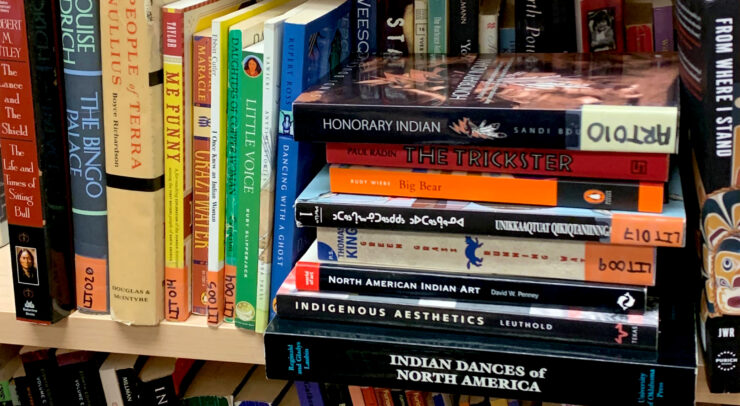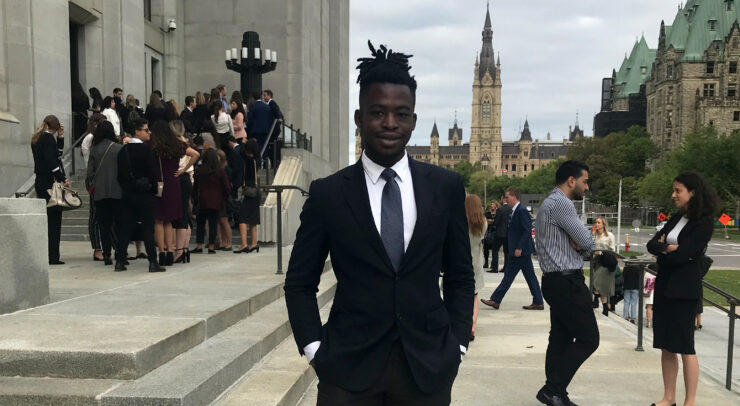The plan, created through consultations with Indigenous communities, will look to Indigenize the school by 2024
The first draft of the University of Ottawa’s Indigenous Action Plan was revealed during a Board of Governors (BOG) meeting on Monday, a framework designed to Indigenize several aspects of the school by 2024.
The plan was prepared by members of the U of O’s Indigenous Affairs department: Tareyn Johnson, the department’s director, and Brenda Macdougall, the academic delegate for Indigenous engagement and director of the Institute of Indigenous Research and Studies.
“A few days ago, Tareyn and I went to Kitigan Zibi Anishinabeg First Nation to meet with the Elders Council to see about having an Algonquin name for the initial Indigenous Action Plan, so that it would have a formal designation,” said Macdougall.
The two began working on the plan in 2017, and through a series of consultation processes with local Indigenous communities, the Indigenous Education Council, the U of O’s Standing Committee on Indigenous Engagement and feedback from Indigenous student associations, they were able to complete the plan in summer 2019.
“We’ve received a lot of support in the drafting of this,” said Macdougall.
The action plan’s four hoops
The framework of the action plan reflects the structure of a wigwam, a traditional dwelling of the Anishinaabeg people, the original inhabitants of the Ottawa region.
According to the action plan, an Anishinaabeg teaching compares a healthy community to a wigwam — it is constructed of arched poles that are tied together to form a domed structure, where the frame has both vertical and horizontal elements in the form of structural poles and stabilizing hoops.
There are four thematic areas — or hoops — that hold up the plan’s framework:
- The institution: Policy, procedural, service and institutional betterment
- Faculties, departments and programs: Indigenous curriculum and research development
- The physical space: Aesthetic infusion, inclusion, improvement
- Indigenous community: internal and external engagement
The institution
The first hoop, “The institution: Policy, procedural, service and institutional betterment”, consists of nine areas of focus:
- Ensure and maintain a minimum of two Indigenous members on the administration’s Board of Governors and Senate
- Develop Indigenous faculty recruitment and hiring policy for tenure-track and part-time positions
- Develop an Indigenous staff recruitment plan to ensure that Indigenous staff are represented throughout the U of O workforce
- Respond to the Truth and Reconciliation Commission’s Calls to Action and fulfill (the university’s) commitment to the Memorandum of Understanding signed with the National Centre for Truth and Reconciliation in 2017
- Develop Indigenous competency courses for faculty, staff, Board of Governors members and members of the Senate from outside the U of O
- Hire Indigenous curriculum specialists within the Teaching Learning and Support Service
- Dedicate funding to support one or more Indigenous counsellors within the Mashkawazìwogamig: Indigenous Resource Centre
- Create a Housing Service Living Learning Community for Indigenous learners
- Establishment of an emergency travel fund
During the consultation process, Macdougall said that Indigenous community members stressed the importance of having Indigenous voices at the university’s governance level, not just in other parts of the school.
“Simply a representative voice of some kind that’s present, and that the voice is feeding back into the Indigenous Education Council and the Standing Committee so that everybody is always working in concert with one another,” she said.
Faculties, departments and programs
The second hoop, “Faculties, departments and programs: Indigenous curriculum and research development”, is made up of 10 areas of focus:
- Within each faculty, explore and implement inclusion of appropriate, traditional and contemporary Indigenous epistemological and ontological knowledge and methodological approaches into curriculums
- Revitalize and support the Institute of Indigenous Research and Studies
- Transition of the Institute of Canadian and Aboriginal Studies into an Institute of Indigenous Research and Studies that has a cross-faculty mandate
- Create experiential learning opportunities for students
- Create pre- and post-doctoral positions for Indigenous graduate students and/or a series of dedicated scholarships and bursaries
- Create Indigenous first-year student pathway
- Create new internship placements and co-op opportunities
- Create Indigenous student mentorship programs
- Create a visiting Indigenous scholars program
- Indigenous Research Preparedness, Protocols, and the Office of Research Ethics and Integrity
Macdougall added that Indigenous community members were concerned about the school’s hiring policy, particularly when it comes to hiring Indigenous faculty.
“They were very concerned that we hire Indigenous people for Indigenous positions and reflecting that,” she said. “What they’re seeing and experiencing on the ground right now is that non-Indigenous people are getting the jobs that are being set aside for (Indigenous people), or that are being designated as Indigenous positions.”
The physical space
The third hoop, “The physical space: Aesthetic infusion, inclusion, improvement”, has four key areas of focus:
- Increase presence of First Nation, Metis and Inuit art and images throughout campus interiors
- Increase Indigenous representation in exterior spaces
- Provide a dedicated, stand-alone building for Indigenous Affairs that includes an appropriately sized and configured space for Mashkawazìwogamig: Indigenous Resource Centre
- Develop and implement a renaming and memorialization plan
According to the action plan, the U of O will look to commission several artistic pieces for the campus, and will begin negotiations to rent Indigenous art from both local and national heritage organizations. Algonquin artists will be prioritized when the school purchases or borrows art.
Indigenous community: internal and external engagement
The fourth and final hoop, “Indigenous community: internal and external engagement”, is comprised of four areas of focus:
- Support the Indigenous Education Council
- Promote youth engagement and outreach with communities and schools
- Provide and support an Algonquin knowledge keeper-in-residence for the Mashkawazìwogamig: Indigenous Resource Centre
- Provide support for Indigenous events and activities
During the BOD meeting, Macdougall said that she’s had discussions with faculty members about launching an immersion training program in Indigenous communities.
“Barrier Lake and the Algonquin nation is francophone, so it would be great to work with Barrier Lake to make sure that we could build that competency with anglophones, and the reverse, as well for francophones,” she said. “But to do it with our own with our communities, I think it would be radical and I think that it would be something that doesn’t happen anywhere else.”
Going forward
The plan, which will be finalized on March 30, will take three to five years to implement, according to the draft.
Jill Scott, the provost and VP of academic affairs at the U of O, said that the school is working with an operating budget of $3.6 million to cover the initiatives’ costs over a five year period.





